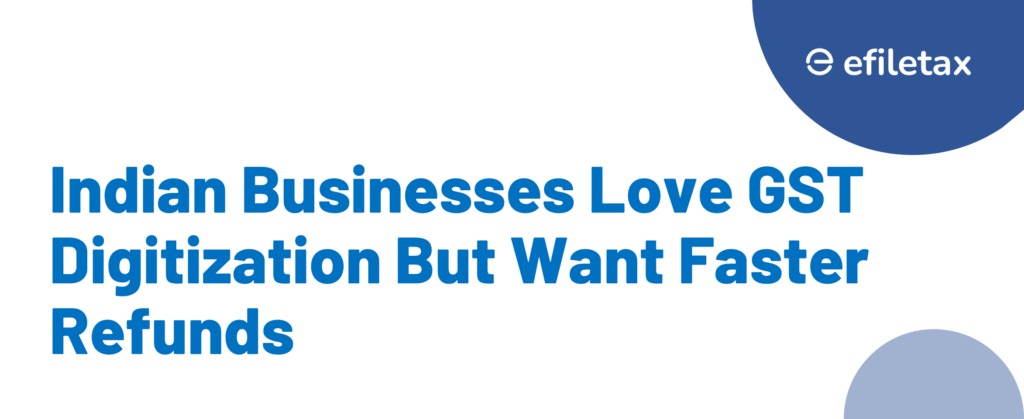
GST Compliance in India Simplified Guide for 2025
GST compliance in India has evolved significantly since its rollout in 2017. According to a Deloitte survey, most Indian businesses appreciate GST reforms — particularly digitization and easier filings.
Yet, key challenges remain: refund delays, rate complexities, and dispute resolution. In this blog, we break down the latest GST compliance requirements, ongoing reforms, and what Indian businesses need to stay ahead in FY 2025–26.
What Is GST Compliance?
GST compliance refers to timely and accurate fulfilment of obligations under the Goods and Services Tax regime — including registration, return filing, tax payment, invoice matching, and audit response.
Key GST Compliance Activities:
- Obtaining GST registration (within 30 days of turnover threshold)
- Issuing tax invoices with proper HSN/SAC codes
- Filing monthly/quarterly GSTR-1, GSTR-3B, and annual GSTR-9
- Reconciling ITC (Input Tax Credit) via GSTR-2B
- Responding to GST notices and audits
- Maintaining digital books and records for 6 years
GST Compliance Trends in 2025
Based on Deloitte India’s GST Survey 2025:
| What’s Working | What Needs Work |
|---|---|
| 88% praise GSTN for digitized return filing | 65% face refund delays (esp. exporters) |
| 74% say e-invoicing made operations smoother | 59% demand rate rationalization |
| 61% found GST audits manageable via portals | 52% want faster adjudication of disputes |
Recent GST Compliance Changes You Should Know
Here are 2025 updates that businesses must incorporate:
- E-invoicing mandatory for turnover ₹5 Cr+ (Notification No. 10/2023–CT)
- New penalty norms for fake ITC under Section 132
- Mandatory 2FA login for GSTN portal users
- GST Amnesty Scheme under Section 128A (till 31.08.2025)
- Updated GST Appellate Tribunal (GSTAT) functioning rules
Refer CBIC’s official notification list for the latest updates.
Focus Area: GST Refunds Still a Major Bottleneck
Despite automation, many taxpayers — especially exporters and MSMEs — face refund delays.
Common Issues:
- Mismatches in GSTR-1 and 3B
- Incomplete documentation
- Bank account not validated on PFMS
- No response to deficiency memos (Rule 90(3))
Expert Tip:
Always match ITC claims to GSTR-2B, submit all annexures, and track refund status via PMT-03A or RFD-01. For exporters, using LUT instead of IGST route can ease compliance.
Dispute Resolution: GSTAT Is Finally Operational
With the launch of the GST Appellate Tribunal (GSTAT) in 2025, taxpayers now have a faster route to resolve appeals.
Key Highlights:
- Cases above ₹50 lakh (tax + penalty) now appealable before GSTAT
- Time limit: 3 months from order receipt (Section 112 CGST Act)
- States will have regional benches for easier access
Reference: CGST (GSTAT Procedure) Rules, 2025
Simplifying Tax Rates: The Next Big Reform?
The current GST structure has 4 main slabs: 5%, 12%, 18%, and 28%.
However, the GST Council is exploring a 3-tier structure to reduce classification disputes and litigation.
As per Revenue Secretary’s April 2025 statement, rate rationalization could be discussed post General Elections.
How to Stay GST Compliant in 2025
Here’s a simple checklist for Indian businesses:
- ✅ File all returns on time (use QRMP if eligible)
- ✅ Maintain digital records & e-invoice archives
- ✅ Reconcile GSTR-2B with purchase books
- ✅ Apply for refunds with correct documentation
- ✅ Respond promptly to GST portal notices
- ✅ Use DSC or e-verification where required
Expert View:
“Automated tools like GSTR-2B reconciliation and e-invoice generators are no longer optional — they’re the backbone of GST compliance today.”
— Tax Consultant, Efiletax
Final Thoughts
While GST compliance in India has improved through digitization and structural reforms, gaps in refunds and dispute resolution need focused policy action. Until then, businesses must stay alert, file timely, and respond smartly.
Need help with GST returns, e-invoicing, or refund filing?
Efiletax offers expert GST services at affordable rates — trusted by 20,000+ Indian businesses.
FAQ: GST Compliance in India
Q1. What are the penalties for non-filing of GST returns?
Late fee of ₹50/day (₹20/day for nil returns), plus interest @18% on tax due.
Q2. How long should GST records be maintained?
At least 6 years from the due date of annual return.
Q3. Can a business claim ITC if the supplier hasn’t filed GSTR-1?
No, as per Section 16(2)(aa), ITC is allowed only if reflected in GSTR-2B.
Q4. Is GSTR-9 mandatory for all taxpayers?
Not for turnover below ₹2 crore — optional filing.
Summary
GST compliance in India is smoother with digital tools, but refund delays and dispute backlogs remain. Here’s a 2025-ready checklist, reforms, and expert tips for Indian businesses.